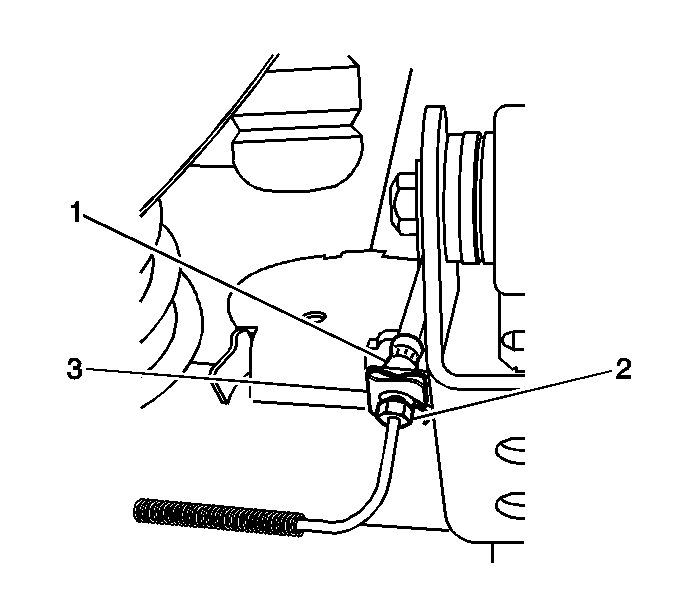Caution: Refer to Brake Fluid Irritant Caution in the Preface section.
Notice: Refer to Brake Fluid Effects on Paint and Electrical Components Notice in the Preface section.
Removal Procedure
Caution: Always use double-walled steel brake pipe when replacing brake pipes. The use of any other pipe is not recommended and may cause brake system failure. Carefully route and retain replacement brake pipes. Always use the correct fasteners and in the original location for replacement brake pipes. Failure to properly route and retain brake pipes may cause damage to the brake pipes and brake system resulting in personal injury.
Important: Brake pipes that run parallel to each other must maintain a 6 mm (1/4 in) clearance.
- Disconnect the brake pipe fittings (2).
- Remove the brake pipe fasteners from the vehicle.
- Remove the brake pipe from the vehicle.

Installation Procedure
- Bend the brake pipe to achieve proper fit.
- Install the brake pipe to the vehicle. Maintain a clearance of 19 mm (3/4 in) for all moving or vibrating components.
- Install the brake pipe fasteners to the vehicle.
- Connect the brake pipe fittings (2).
- Bleed the brake hydraulic system. Refer to one of the following procedures:

Notice: Use the correct fastener in the correct location. Replacement fasteners must be the correct part number for that application. Fasteners requiring replacement or fasteners requiring the use of thread locking compound or sealant are identified in the service procedure. Do not use paints, lubricants, or corrosion inhibitors on fasteners or fastener joint surfaces unless specified. These coatings affect fastener torque and joint clamping force and may damage the fastener. Use the correct tightening sequence and specifications when installing fasteners in order to avoid damage to parts and systems.
Tighten
Tighten the brake pipe fitting to 25 N·m (18 lb ft)
| • | If the brake pipe that was replaced was between the master cylinder and the BPMV, refer to Antilock Brake System Automated Bleed Procedure . |
| • | If the brake pipe that was replaced was between the BPMV and the wheel jounce hoses, refer to Hydraulic Brake System Bleeding . |
